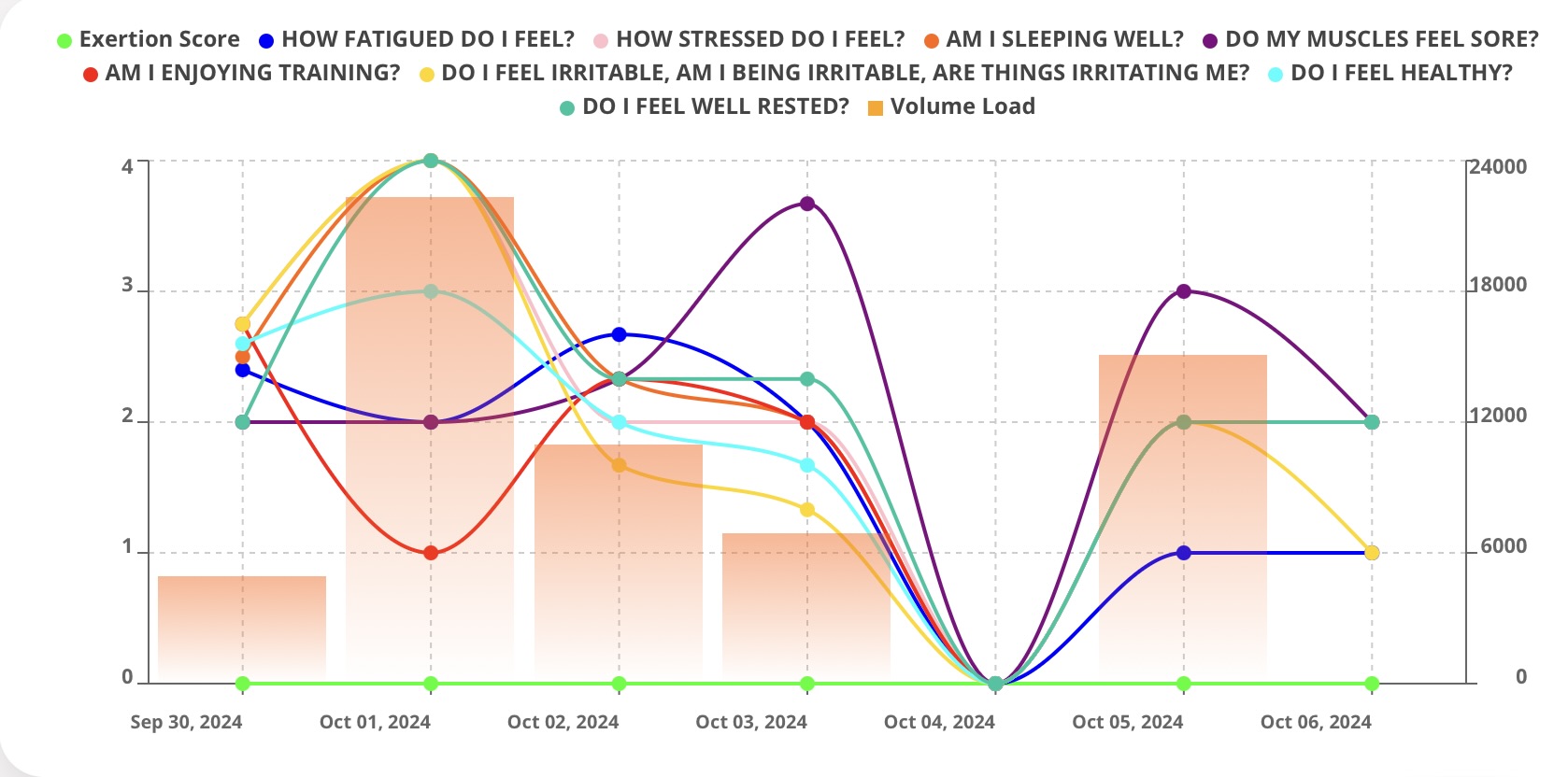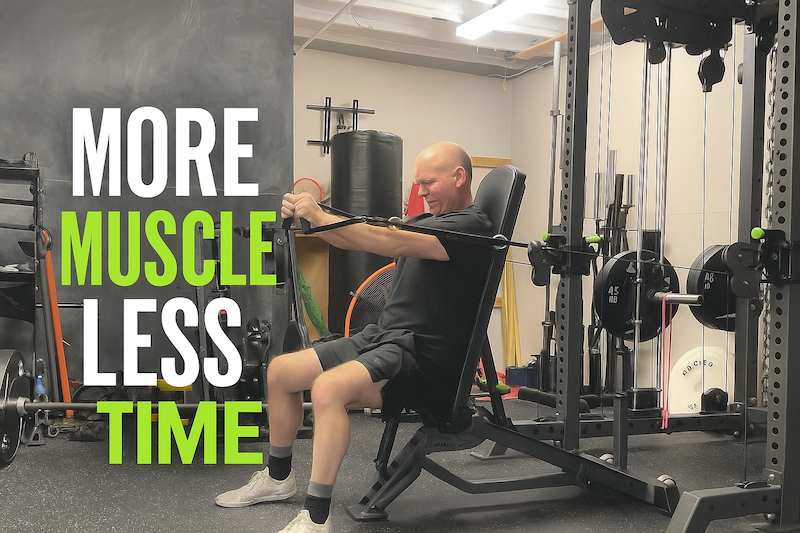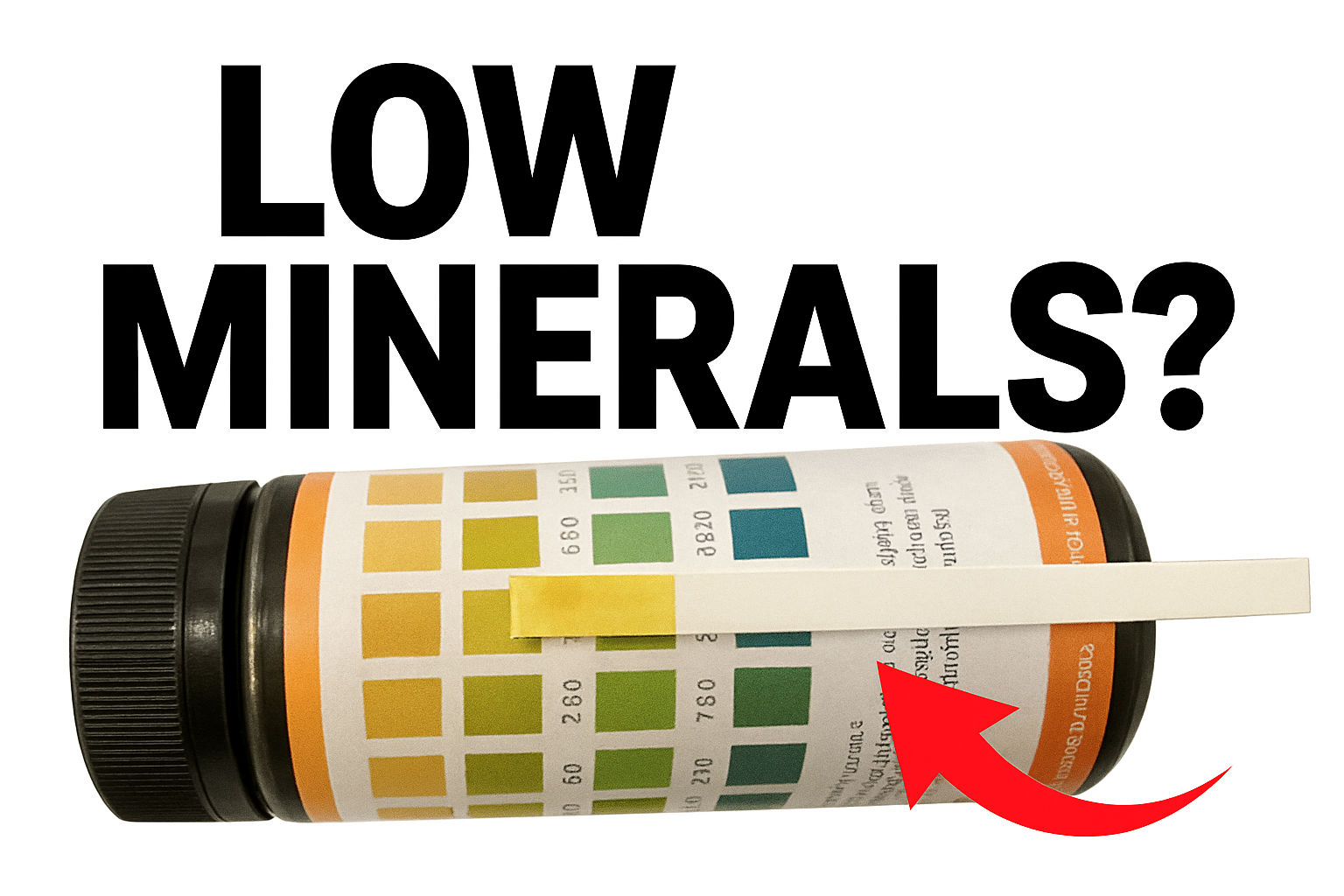I first heard about the Hooper Mackinnon questionnaire on the Train With Push website (trainwithpush.com). I looked at the questionnaire and it immediately made sense to me how the questions asked could be very helpful for training, and I also knew how I could potentially use supplements to help as well, which I’ll get to shortly.
After using the HM questionnaire with many of my clients I reached out to Chris Chapman, strength coach for the Canadian big air/slopestyle ski team and sports scientist. He provided me with the actual study and told me that the Canadian Olympic Team uses this questionnaire to aid with training.
The Study
19 elite-level swimmers consented to be monitored during a 6-month preparation for the Australian team selection trials. All subjects were ranked within the top 10 in previous Australian titles. 14 out of the 19 finished the study.
Based on ease of use and cost, questions were asked and aimed to look at ratings of sleep, fatigue, stress, enjoyment of training, and muscle soreness. There were 8 questions to identify these all on a scale of 1-7, with 1 being the best you could be and 7 the worst. Scores in the logs > 5 for more than 7 consecutive days were considered stale. Swimmers who did not meet these criteria were classified as nonstale. There were no significant differences in the way the subjects were trained based on the answers to the questions. Three of the 14 subjects were classified as stale and their scores predicted this by the midseason, long before the deterioration of their performance showed up.
Here are the 8 questions that were asked.
- How fatigued do I feel?
- How stressed do I feel?
- Am I sleeping well?
- Do my muscles feel sore?
- Am I enjoying training?
- Do I feel irritable, am I being irritable, are things irritating me?
- Do I feel healthy?
- Do I feel well-rested?
“The recovery of athletes from the fatigue of intense training has not been studied in detail, although coaches have long used the technique of tapering (a gradual reduction in training load) to allow the athlete to recover from intense training and thus optimize performance during competition. In this study, tapering did not appear to provide the stale swimmers with sufficient time for complete recovery before a competition, because fatigue and muscle soreness ratings for the week before taper and post-competition testing were significantly higher for the stale swimmers than for the nonstale swimmers.”
- paragraph directly from the study
It was concluded based on the self-reporting data that the Hooper Mackinnon questionnaire may provide an efficient means of monitoring both overtraining and recovery. I also consider it very useful for determining what an “optimal” amount of volume would be for the day and potentially seeing what bottlenecks may be limiting getting the best results from training. The study came to this same conclusion because none of the subjects were trained any differently based on their answers to the questions and I believe if they had been then the drop in performance could have been avoided.
I’ve read many differences on how coaches believe tapering an athlete to peak for a competition or event should be done and I’ve heard straight from one great coach’s mouth that it took 6 weeks for super-compensation to occur for some of his track athletes. So for basically 6 weeks, these athletes showed a deterioration in strength. I don’t know about you but I don’t feel good about chancing an athlete’s timeframe for when they can peak by essentially throwing caution to the wind and hoping for the best. What if there’s a better way to train athletes than the standard theory of super-compensation and instead base training volume and load on what is happening at the very moment of training such as a Two-Factor Theory (Fitness – Fatigue Theory as discussed in Science and Practice of Strength Training by Vladimir Zatsiorsky, William J. Kraemer, and Andrew C. Fry.
I’ve tried many different ways to determine nervous system fatigue and someone’s state of readiness ranging from dynamometers, vertical jump tests, and HRV, and I’ve found flaws in all of them and they never served me as well as I would’ve liked. This is exactly why I’ve been using the Hooper Mackinnon questionnaire.
What I initially do with the answers to the 8 questions is determine how hard I should train someone for a day. As of now what I adjust is training volume and not training intensity. So if someone is showing high stress and/or poor sleep I may have them do 1 less set of exercises than what they’re scheduled to do. This is often referred to as a de-load. I also look to see if there’s a long pattern of poor scores. If this is the case I’ll consider how I might be able to fix this with supplements and diet. For instance, if someone has been scoring high for stress I currently use a supplement for adrenal support called Adrenal Flow by Designs For Sport. This helps to build some resiliency to stress. If they score poorly in sleep I’m currently using a good form of magnesium such as magnesium glycinate or magnesium threonate. These tend to improve sleep quality well.
Here’s a screenshot of one of my virtual athletes answers.
This athlete has a few concerning scores. What I did with him initially is have him take essential amino acids during his training sessions and have him drink a whey protein shake immediately post training. This would address the excessive muscle soreness problem. He also took magnesium glycinate before bed to improve his sleep quality. All of these products were from Designs For Sport, a sports performance line that are NSF certified. If we got his scores down on muscle soreness, sleep, and how well rested he felt, he would recover from the training better and it would have an improved effect. He also might be able to handle more training volume. I’ve seen people shave 10 points off their total score on the Hooper Mackinnon and feel way better.
Science and Practice of Strength Training. Chapter 1 Basic Concepts of Training Theory page 3-14. By Vladimir Zatsiorsky, William J. Kraemer, and Andrew C. Fry





